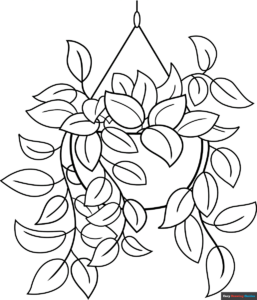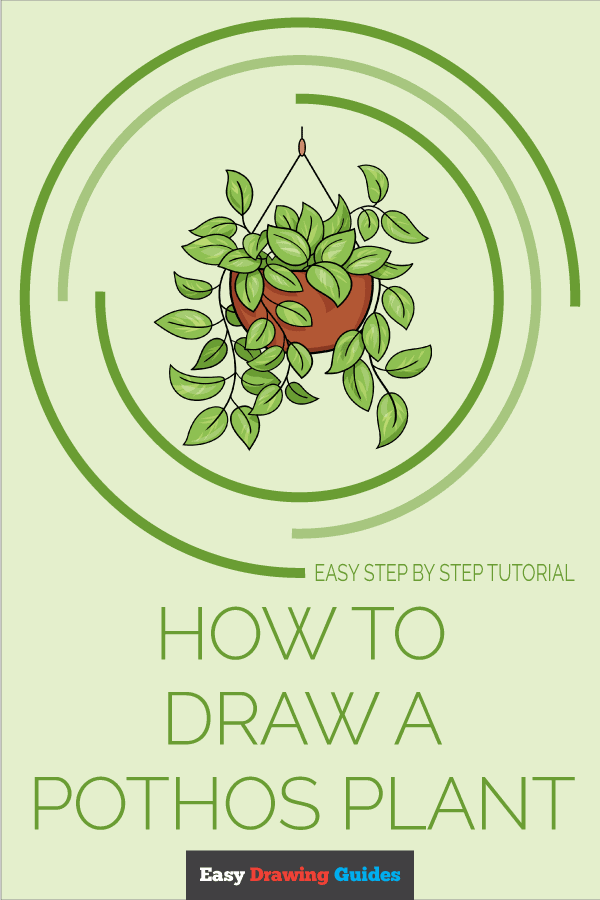Learn how to draw a great looking Pothos Plant with easy drawing instructions and video tutorial.
By following the simple steps, you too can easily draw a perfect Pothos Plant.
Step-by-Step Instructions for Drawing a Pothos Plant
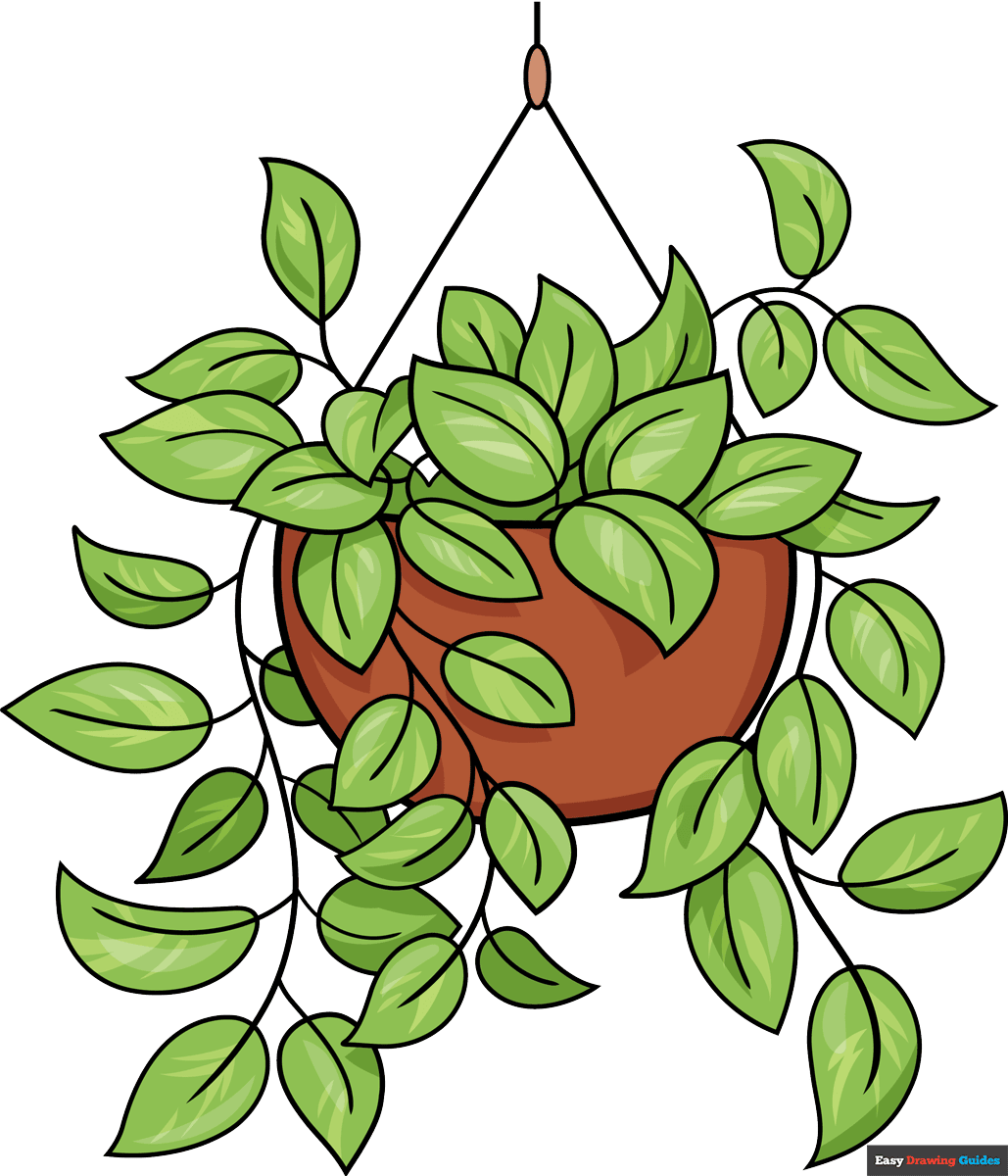
How to Draw a Great Looking Pothos Plant for Kids and Beginners - Step 1
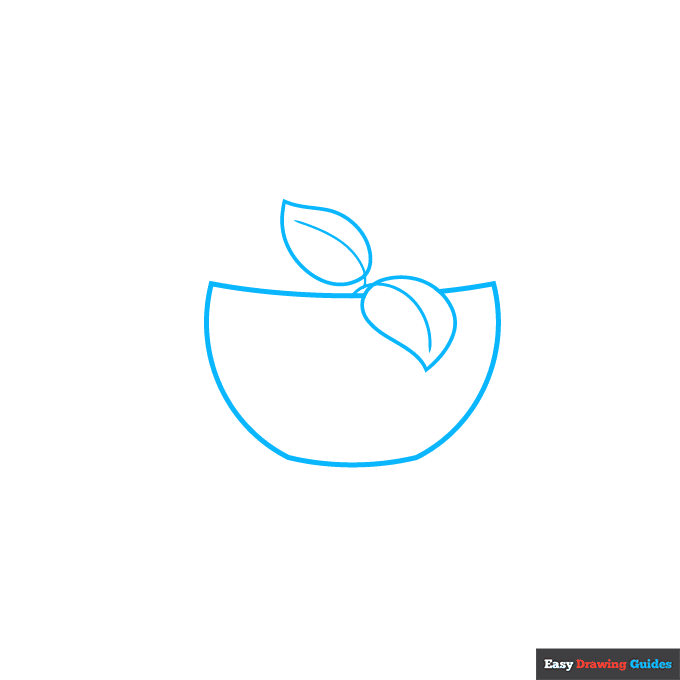
1. Begin the cartoon pothos outline by drawing two leaves. First, draw two curved lines that branch from one another like the letter “Y.” Then, use curved lines to draw a teardrop shape around each one.
Next, draw the flower pot. Draw a horizontal curved line that passes behind one leaf to form the top of the pot and another long curved line for the bottom.
Drawing Step 2
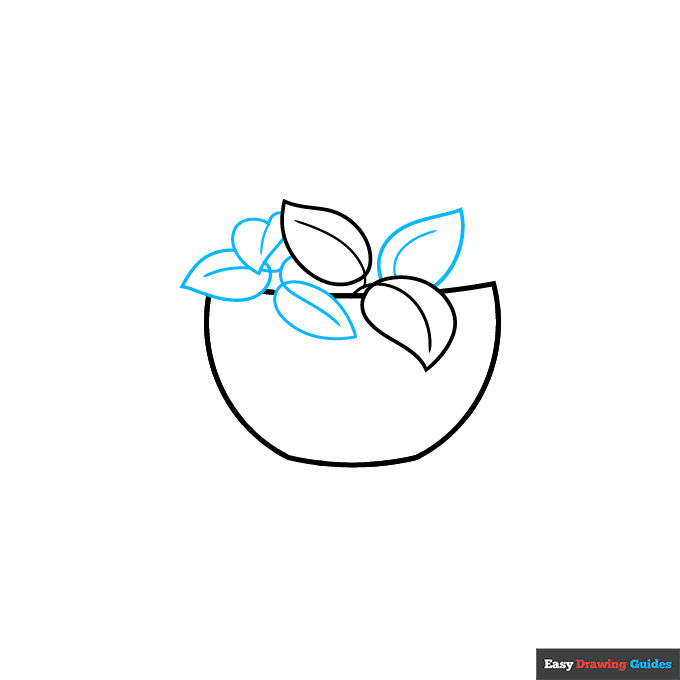
2. Draw more leaves, some with “Y” shaped branching stems. For each leaf, start with a curved line for the stem and central vein. Then use curved lines to enclose a teardrop shape around it.
Unlock AD FREE and PRINTABLE drawing and coloring tutorials
- 1,900+ drawing & coloring PDFs
- 50+ ebooks
- Ad-free website
Drawing Step 3
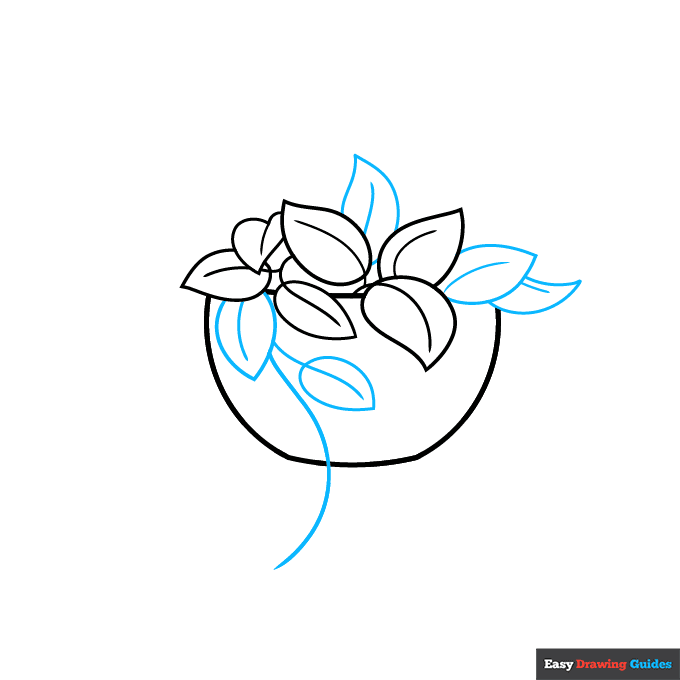
3. Draw more leaves, using curved lines for the central veins and to enclose the teardrop-shaped leaves.
Erase portions of the pot as needed. Extend a long curved line to form one of the plant’s vining tendrils.
Drawing Step 4
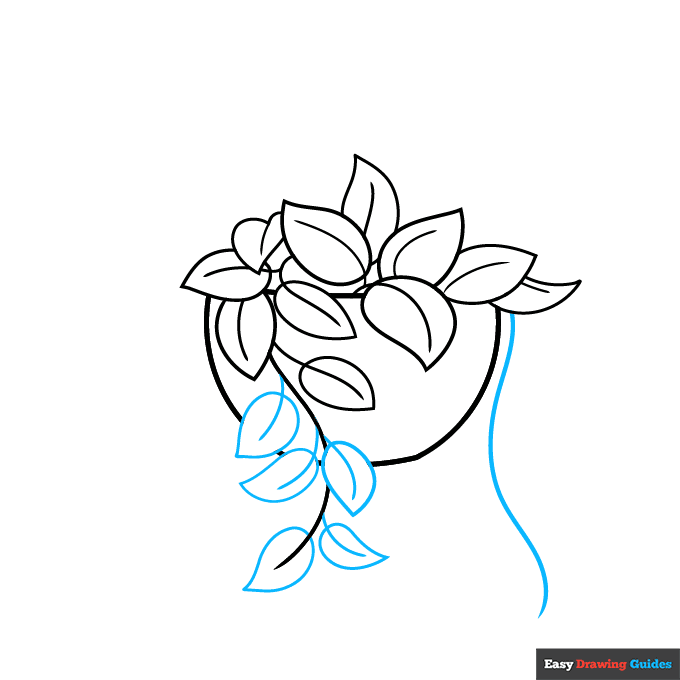
4. Draw several leaves along the vine, erasing as necessary. Use curved lines for the central veins and the edges of the leaves. Then, extend another long curved line to form another vine.
Drawing Step 5
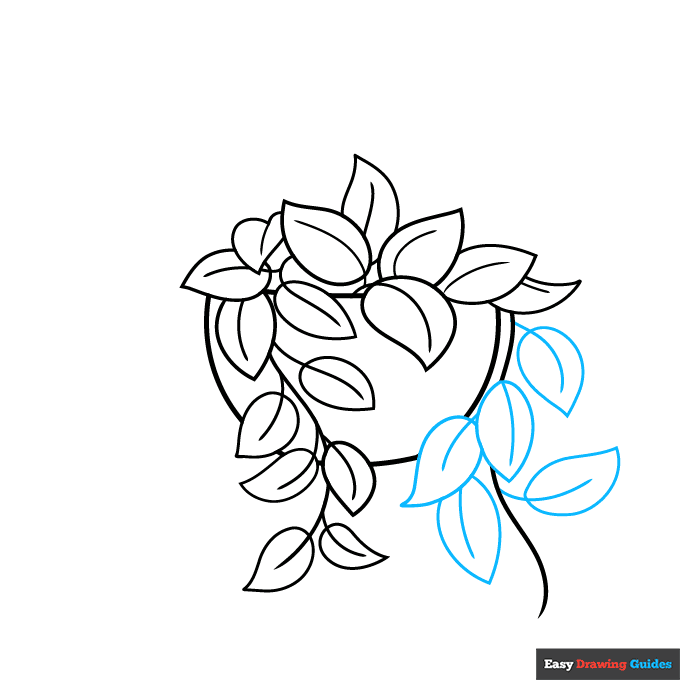
5. Draw leaves along the vine, erasing as needed. Use curved lines for the central veins and the edges of the leaves.
Drawing Step 6
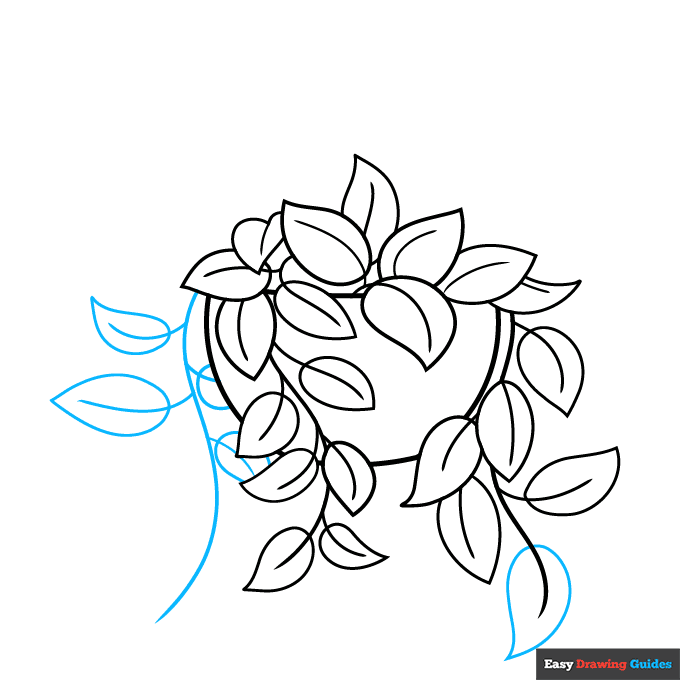
6. Draw a long curved line from one side of the plant. Draw leaves along it, some of them partially hidden behind the pot and other leaves. Enclose a teardrop-shaped leaf around the end of the previous vine.
Drawing Step 7
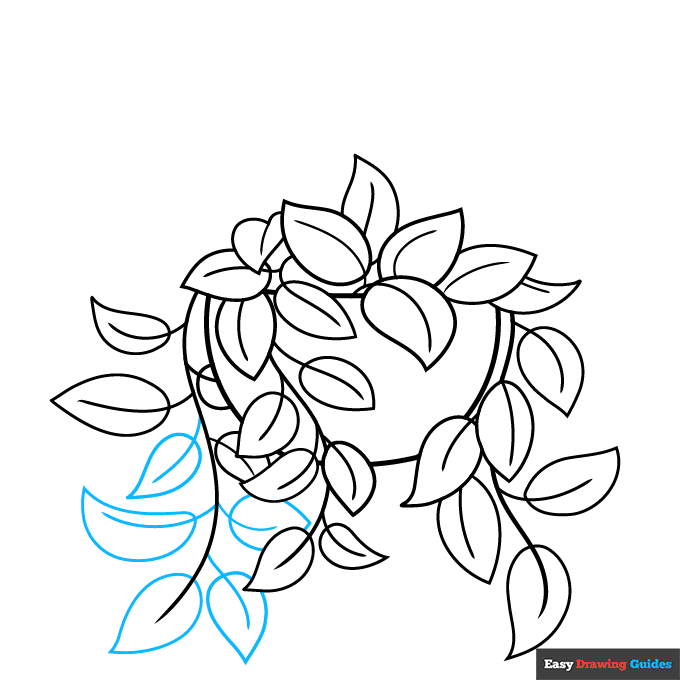
7. Draw more leaves along the vine. Again, use curved lines for the central veins and the edges of the leaves.
Add More Details to Your Pothos Plant Picture - Step 8
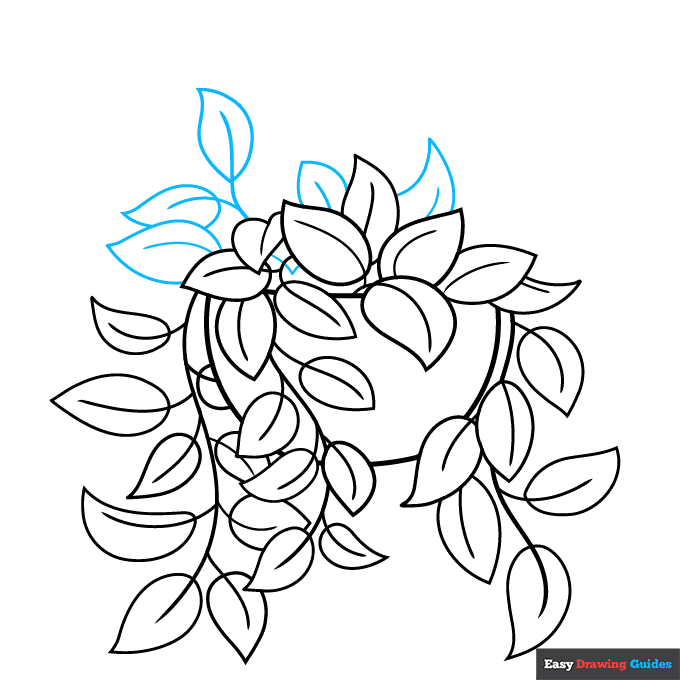
8. Use curved lines to draw more stems and teardrop-shaped leaves.
Complete the Outline of Your Pothos Plant Drawing - Step 9
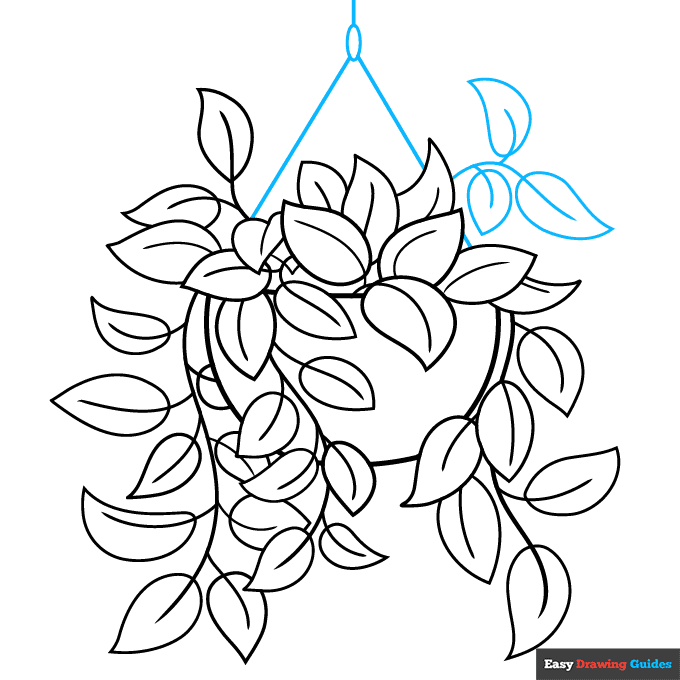
9. Draw one more stem with teardrop-shaped leaves. Then enclose a small, narrow oval above the plant.
Extend straight lines from the oval to the plant, then draw a short line above the oval. This is the pot’s hanger.
Color Your Pothos Plant Drawing
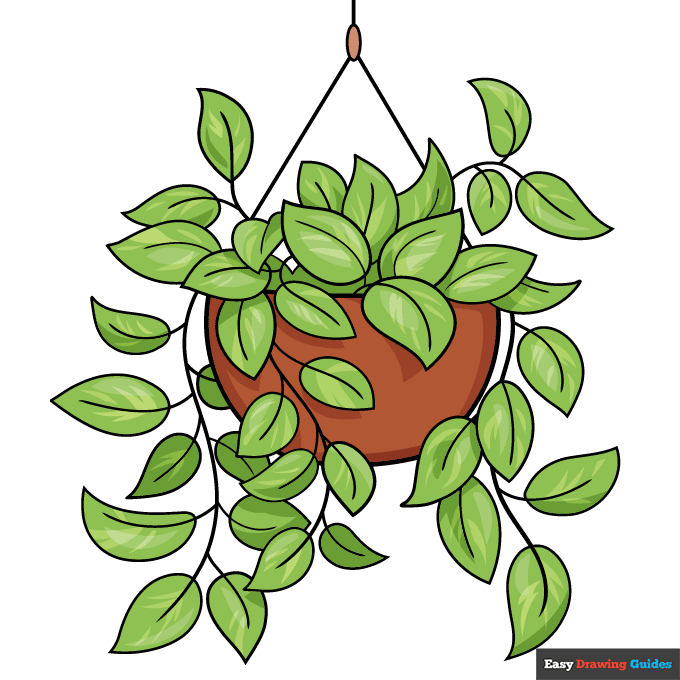
Your cartoon pothos outline is now complete. Color the plant. Some pothos are solid green while others are variegated with white, yellow, silver, pink, or dark and light green blotches.
Watch 'How to Draw a Pothos Plant' Video Tutorial
Learn More About The Pothos Plant Drawing
Pothos are a favorite easy-to-grow houseplant. Even if you don't have a green thumb, you can "grow" one with the help of this easy, step-by-step pothos plant drawing guide.
As you draw, there are two things you will notice about the shape of the pothos plant. First, its leaves are teardrop-shaped.
Second, the leaves grow along long vines that hang from the pot. The stems of the leaves branch off of the main vines.
Pothos looks a bit like another common vine, English ivy. The main difference is that ivy can live outside in cold weather, whereas pothos are tropical and must be grown inside as houseplants.
There are many different types of pothos, but all have similar leaf shapes. Sometimes they are called Devil's ivy because they are almost impossible to kill.
That makes them a great plant if most of yours look like this dead flower drawing. You can also learn how to draw a potted plant with a tropical bloom.
Pothos Plant Drawing Tutorial - Easy & Fun Printable Pages
Join now and get immediate access to thousands of printable drawing instruction and practice pages!
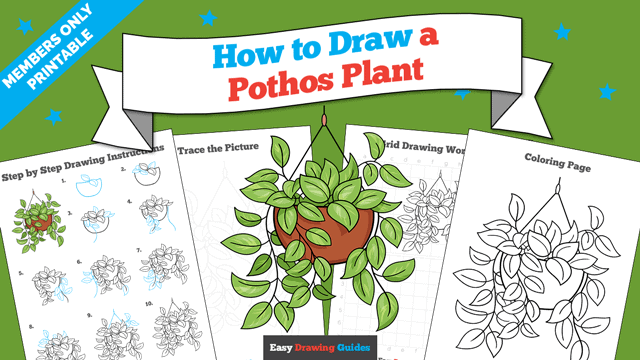
Learn how to get access to thousands of printable pages!

MEMBER TROUBLESHOOTING
Still seeing ads or not being able to download the PDF?
First, check that you're logged in. You can log in on the member login page.
If you're still not able to download the PDF, the likely solution is to reload the page.
You can do this by clicking the browser reload button.
It is a circular arrow-shaped icon at the top of the browser window, typically found in the upper-left side (you can also use keyboard shortcuts: Ctrl+R on PC and Command+R on Mac).

